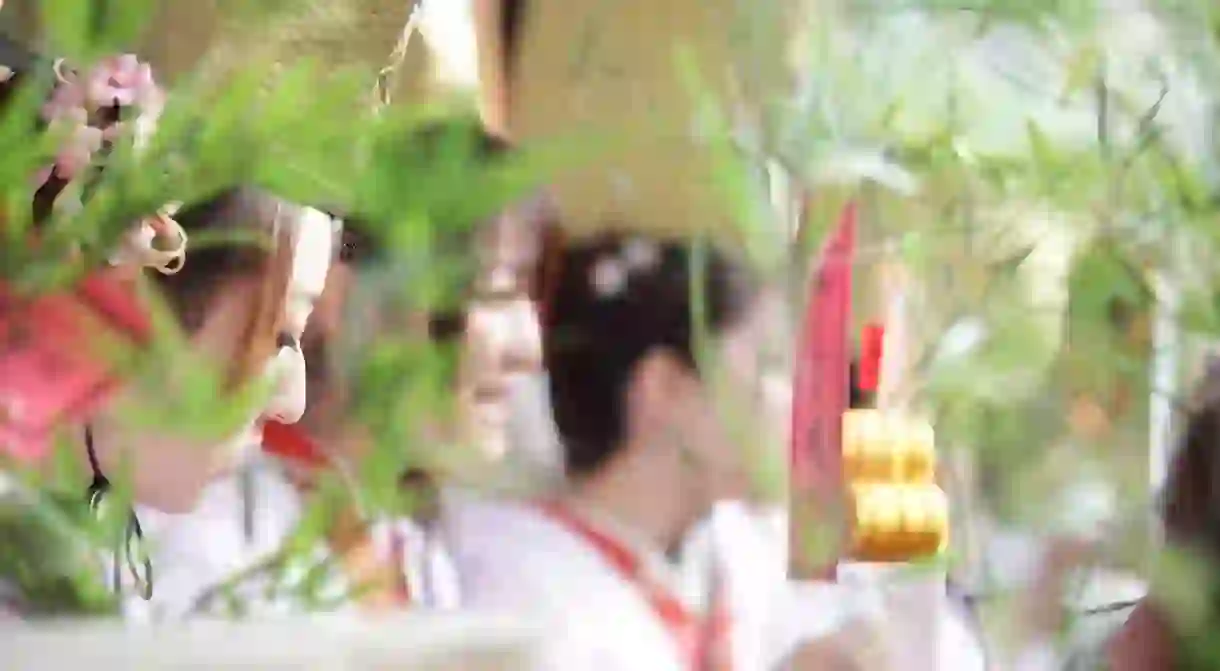7 Lesser-Known Japanese Traditions

There are some things almost everyone associates with Japan, such as hanami, vending machines, and sushi. But this country has a long history and countless traditions, and while some customs may not be as well known, they are no less meaningful. Discover seven lesser-known traditions from Japan.
Inviting luck to a business with fukusasa
Japan has a lot of fun traditions, superstitions, and rituals surrounding luck, from lucky shrine amulets (omamori) to lucky cat statues (Maneki Neko). Fukusasa are branches of leafy bamboo decorated with lucky trinkets and ornaments made by miko (shrine maidens). They are typically sold in January by shrines dedicated to Ebassen, the Shinto god of business prosperity. Business owners buy them in the hopes of inviting luck to their companies for the remainder of the year.

Forgetting the year with bonenkai
In the weeks leading up to New Year’s Eve, many people are busy with bonenkai or “forget the year parties.” Typically, companies organize these gatherings for their employees, but friends also get together for bonenkai. In fact, December is such a busy time of year for private parties at restaurants and izakaya that it can be difficult to get a reservation.

Saying goodbye with toro nagashi
The Japanese custom of setting floating lanterns on the water is known as toro nagashi, traditionally viewed as a way to light the path for souls on their way to the afterlife. Because of this, it’s most commonly observed around the O-bon holiday, when spirits of the dead are invited back to the land of the living.

Celebrating autumn with tsukimi
Long ago, the Japanese believed that their country was the only one in the world to experience four distinct seasons. Partly because of this, they observed the changing of the seasons with an especially appreciative eye, and many of the old customs for celebrating the changing seasons live on in modern Japan. Tsukimi, or moon gazing gatherings, happen throughout the country in autumn but on a much smaller scale than the similar event, hanami, in spring.

Keeping resolutions with daruma
Daruma dolls are wooden dolls modeled after the monk who founded Zen Buddhism. They are most popular at the beginning of the year. Paint one eye as you make your wish, and paint the second when it comes true. Having a physical reminder is a great way to stick to your resolutions and encourages you to make your dreams come true.

The Japanese strawberry shortcake
Japan’s take on strawberry shortcake is lighter and less sweet than the American version, made with sponge cake instead of biscuits. It’s the most popular cake for festive occasions, such as birthdays and Christmas. In Japan, strawberry shortcake is also known as Christmas cake due to its popularity around the holiday, since many families have a tradition of buying one to eat on Christmas Day.

Enjoying Kentucky for Christmas
Eating KFC on Christmas Day has been a tradition in Japan since the 1970s. That’s when the company came out with their slogan “Kentucky for Christmas” to hook diners, and it didn’t hurt that mascot Colonel Sanders bore a weird resemblance to the guy in the red suit. Since turkey is pretty uncommon outside of its native North America, but chicken is a close substitute, the habit stuck, and people all over the country still line up to grab theirs each year.














